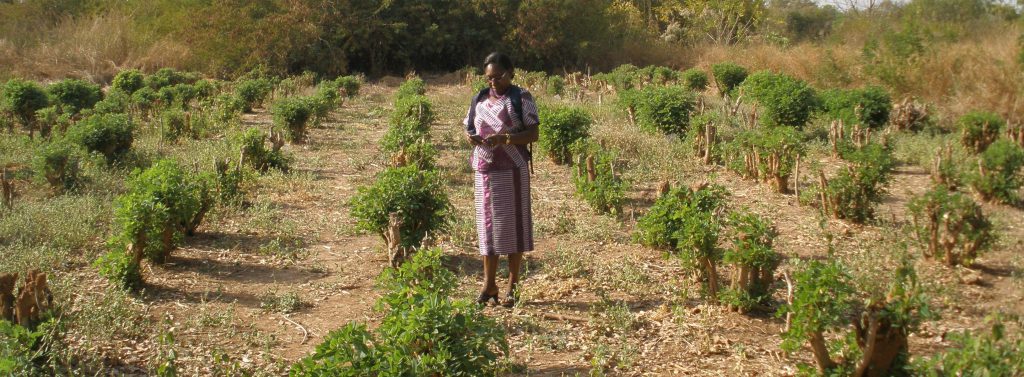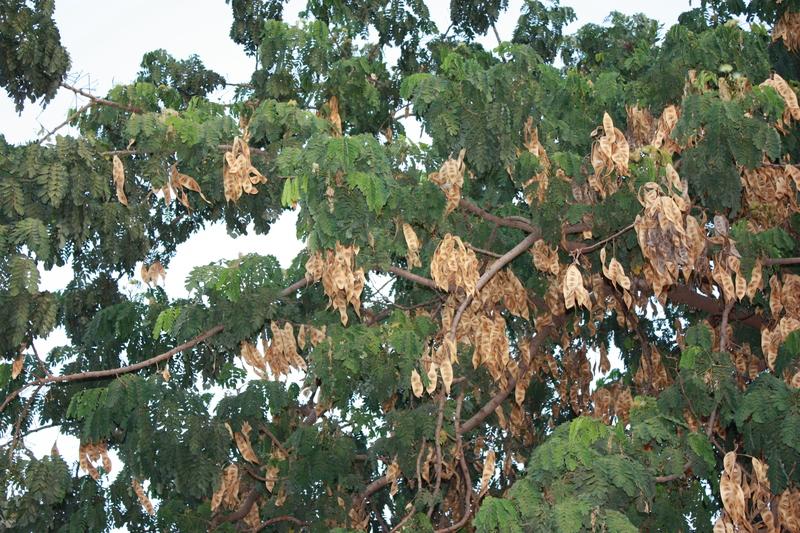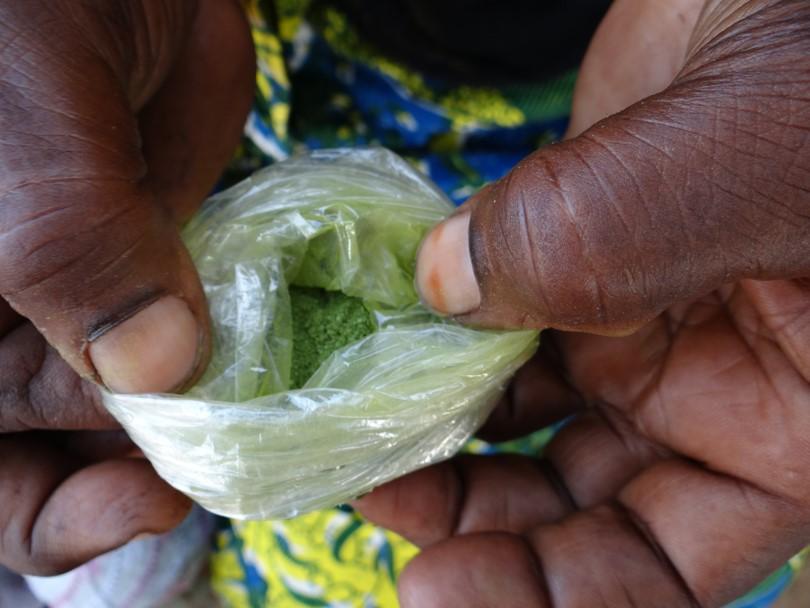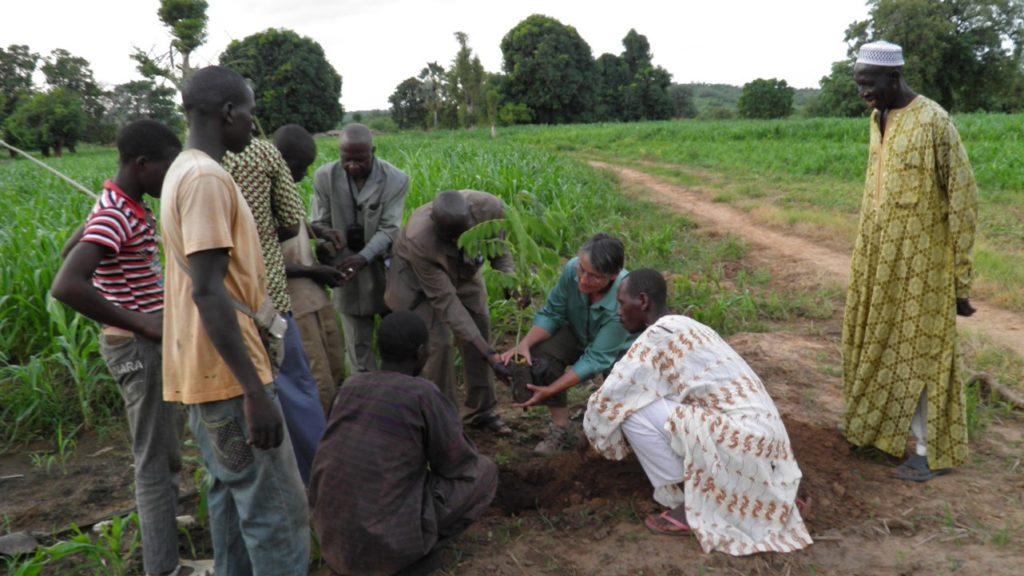
Trees Improve The Soil
Feb. 20 | 2016
Planting Trees to Improve the Soil

In many countries, Fertilizer trees are being integrated with crop and pasture land to improve the condition of degraded soil and decrease food insecurity. These plants are also referred to as green manure because of their ability to enrich the soil that is often depleted by growing crops year after year.
There is increasing human and livestock pressure on the available land and forage resources. The efficiency with which livestock can convert feed into meat and milk is greatly reduced when only poor quality forage is available. This results in major weight loss, stunting, and high death loss.
Scientists at the World Agroforestry Centre have been working since the 1980s to identify indigenous tree species that can be planted alongside crops to improve soil fertility. Fertilizer trees integrated with crops in African countries such as Malawi and Zambia has resulted in a doubling or tripling of maize yields.
An example of the Fertilizer tree is the legume tree whose shoots, leaves, and seed pods pack protein. The plant’s leaves are feathery and allow sunlight to reach grass growing below, but its sturdy branches can withstand hefty browsing by livestock and will recover quickly.
Bacteria in the nodes of the leucaena roots “fix” nitrogen up to three feet deep, which helps to fertilize the soil naturally. Protein level has been tested at up to 25% and is a highly nutritious supplement for livestock.
This project sourced and planted over 3,000 Fertilizer trees as a source of nutrition for sheep and goats. A demonstration site was set up at Katibougou, one of the villages. The 1 hectare is fenced with well, pump and irrigation for the integration of vegetables during the dry season. The 3 species of the family Leguninosae (legumes) trees planted are: Gliricidia Sepium, Albizia Lebbeck, and Leucaena Leucocephala, along with Moringa oleifera another important tropical tree.

Moringa oleifera is common to Mali and unusual for its high nutritional value for people. Rare for a plant source, it contains all the essential amino acids (proteins). Gram-for-gram it contains seven times the vitamin C of oranges, four times the Vitamin A of carrots, and four times the calcium of milk.
It is used as a food supplement and as a tea. It is also said to increase the milk production of goats. Moringa, Leucaena, and Glyricidia grow readily from seeds or cuttings, in marginal soil, and with very little water. They produce fruit and leaves within 8 months.
How Fertilizer Trees Improve the Soil
Fertilizer trees enhance soil health by drawing nitrogen from the air and transferring it to the soil through their roots and leaf litter, replenishing exhausted soils with rich sources of organic nutrients. They can also bring nutrients from deep in the soil to the surface for crops with shallow roots.
These trees lessen the effects of climate change by helping to stabilize erosion, increasing water infiltration, and improving soil density. The trees help reduce water run-off and soil erosion that is a key factor behind food production shortfalls in Africa. Farmers that plant these trees are getting higher crop yields from the same amount of rainwater.
Fertilizer Trees Provide Nutrient Rich Fodder for Livestock
The legume trees, in addition to their nitrogen fixing ability also can provide forage in cut-and- carry ruminant feeding systems, wind breaks and shade for livestock and function as protein banks. The use of fodder trees as an alternative feed for livestock in agro-forestry systems can reduce grazing pressure and damage on more sensitive plants. An example is in East Africa where an estimated 200,000 smallholder dairy farmers are using fodder trees as a source of high quality nutritious feed to boost milk yields. This is particularly useful during the dry season when grass and crop leftovers are scarce.
“We never thought to grow trees to feed animals.” Village Elder
Why Leguminosae Plants are Important

On our planet there is a finite amount of any element, and these must be cycled and recycled so that they are available to support life.
The nitrogen cycle is one of these. Our atmosphere is about 78% nitrogen, but it is not in a form that can be readily used by animals. Atmospheric nitrogen must be fixed and this happens in the root nodules of legumes, in the soil by other bacteria, and by lightning.
Leguminosae are family of plants, herbaceous and woody, that function as soil enrichers because they have the capacity to take inert Nitrogen from the air and, with the help of bacteria, fix (change) this Nitrogen into a usable form. This process takes place in the plant roots, in nodules that contain species of Rhizobia, the bacteria that carry out this function.
This nitrogen is then transported though-out the plant for the plants use and released into the soil. Nitrogen is needed by all living things as it is part of all proteins and DNA. Animals get their nitrogen by eating the plants containing crude protein or animal products.
Agroecology: This has been defined as the application of ecological concepts and principles to the design and management of sustainable agricultural ecosystems. This approach is based on enhancing the habitat both above ground and in the soil to produce strong and healthy plants by promoting beneficial organisms while adversely affecting crop pests (weeds, insects, diseases, and nematodes).
Agroforestry is a land use management system in which trees or shrubs are grown around or among crops and on pastureland. It combines agricultural and forestry technologies to create more diverse, productive, profitable, healthy, and sustainable land-use systems.
Permaculture is a movement that incorporates many ideas from agroecology but very specifically advocates for certain design principles derived from observations of natural ecosystems in order to create sustainable settlements and agriculture.
For more information on agroforestry practices check out these resources:
Langford, Kate (October 14, 2011). “New Study Finds 400,000 Farmers in Southern Africa Using Fertilizer Trees to Dramatically Improve Food Security“. World Agroforestry Centre. Retrieved August 29, 2012.
http://www.worldagroforestry.org/evergreen_agricultureMarshall, Jessica (August 8, 2012). “African tree acts as ‘fertilizer factory’ for crops”. MSNBC. Retrieved August 29, 2012.
Langford, Kate (August 31, 2011). “Surviving drought through agroforestry”. World Agroforestry Centre. Retrieved August 29, 2012.
Palmer, Lisa (March 13, 2014) “In the Pastures of Colombia, Cows, Crops and Timber Coexist”
Kristjanson, P; Neufeldt H, Gassner A, Mango J, Kyazze FB, Desta S, Sayula G, Thiede B, Forch W, Thornton PK, Coe R (2012). “Are food insecure smallholder households making changes in their farming practices? Evidence form East Africa“. Food Security 4 (3): 381 “397.doi:10.1007/s12571-012-0194-z
[efsrow]
[efscolumn lg=”6″ md=”6″ smoff=”0″ mdoff=”0″ lgoff=”0″ ]
[/efscolumn]
[efscolumn lg=”6″ md=”6″ smoff=”0″ mdoff=”0″ lgoff=”0″ ]
[/efscolumn]
[/efsrow]

